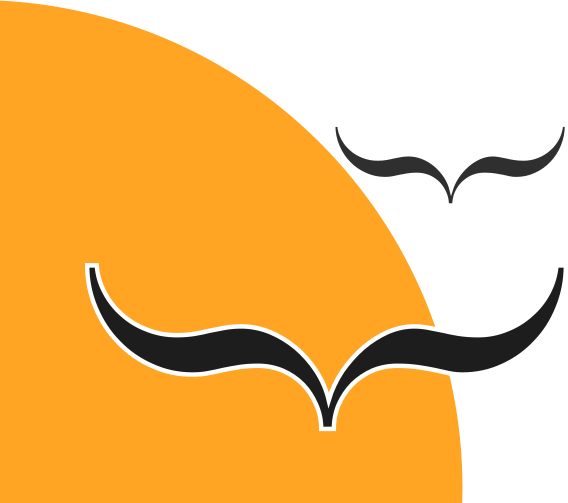Tzoumerka is made of stone. Not just the towering peaks of this mountainous area, formed by nature and geography over millennia, but almost everything made by human hands — the walls, town squares, bridges and buildings — has been crafted from the local stone.
It creates quite an impression: permanence, timelessness and a resistance to change.
It is this unspoilt beauty of the natural environment and the traditional way of life in the area’s 47 stone-built villages — known as the Tzoumerkohoria — that bring thousands of tourists here each year. But the slow pace of change is also driving many — especially the young — away to seek greater opportunities in Ioannina, the regional capital, Athens or cities beyond Greece’s borders.
In fact, Epirus, the region to which Tzoumerka belongs, is suffering from significant population decline and the second highest long-term unemployment rate in the EU (2018). When the tourists leave, most of Tzoumerka’s villages are virtually empty.
But there are many who believe it doesn’t have to be this way — that there are alternatives to a long, slow decline. Boulouki, Tzoumakers and the Theodoros Papagiannis Museum of Contemporary Art are three initiatives that are reviving the area’s tradition of craft and making things by hand; recovering lost skills, giving people reasons to stay, work and create; and injecting a new energy into rural life.
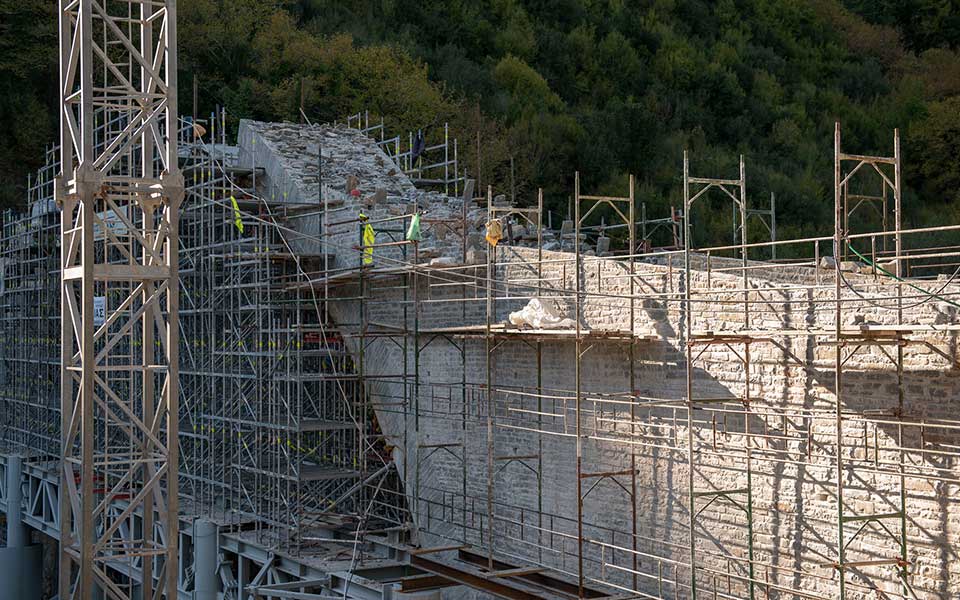
Building Bridges
Epirus is known for its grand stone bridges that span the area’s rivers. The most famous of all is the 19th-century Plaka Bridge, which was the largest single-arch bridge in the Balkans, spanning the Arachthos River and once the border between the nascent Greek state and the Ottoman Empire.
However, it collapsed during major storms in the winter of 2015 and is currently being rebuilt.
Boulouki is a five member multidisciplinary group of architects and engineers who work with stonemasons and other craftspeople to promote the use of traditional building techniques and the sustainable use of local materials.
To support the reconstruction of the Plaka Bridge, they have run a two-month apprenticeship camp and a 12-day stone construction workshop attended by aspiring artisans from across the Balkans, who came to rebuild the traditional kalderimi (stone path) leading to the bridge.
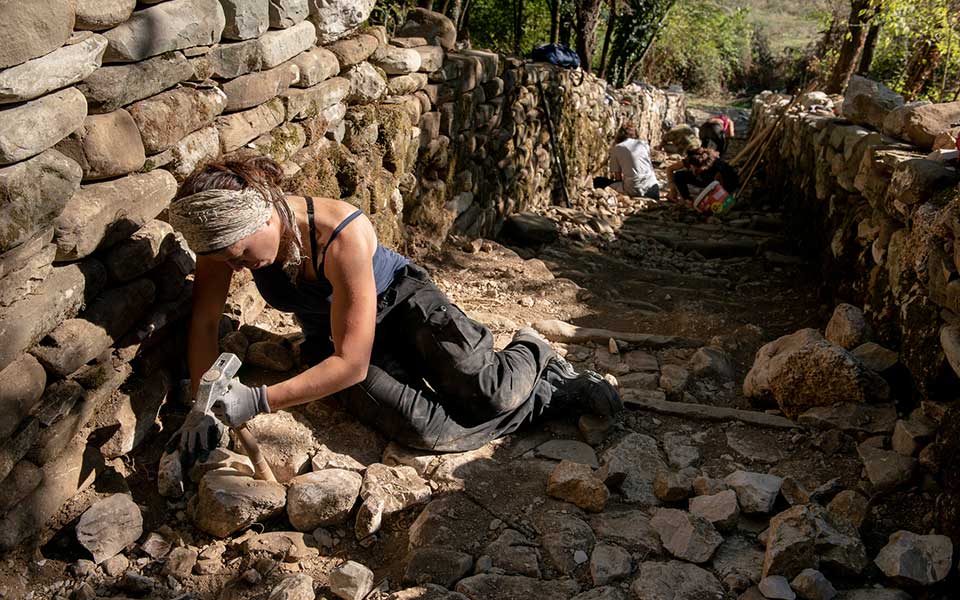
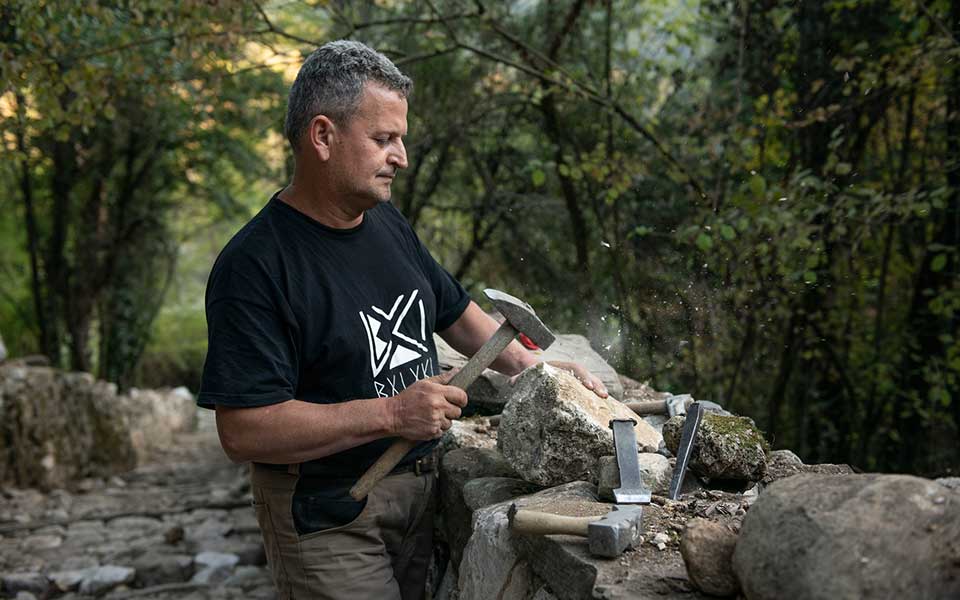
A founding member of Boulouki, Mina Kouvara is an architect with an MSc in Environment and Development of Mountain Regions. “Boulouki’s aim is to recover the lost skills of rural craftsmanship, which always comes back to our basic needs as humans,” Mina says. “Traditional craft and architecture is always connected into a wider framework of society, economy and environment.”
Boulouki sought out old stonemasons — many who have long retired — from around Greece, to bring their tools and demonstrate their craft to the young participants who came from Greece, Serbia, Albania, Bulgaria, Croatia, Romania and Bosnia-Herzegovina. These masterclasses formed part of a wider training program that also included a visit to a local quarry, stone carving with traditional tools, lime mortars and mud plasters.
Greece has become increasingly disconnected from the rest of the Balkans since the end of World War II. By bringing together these young and old builders to exchange knowledge and share skills, they are strengthening a network of connections between Greece and the wider Balkans — just as the Plaka Bridge did in its heyday.
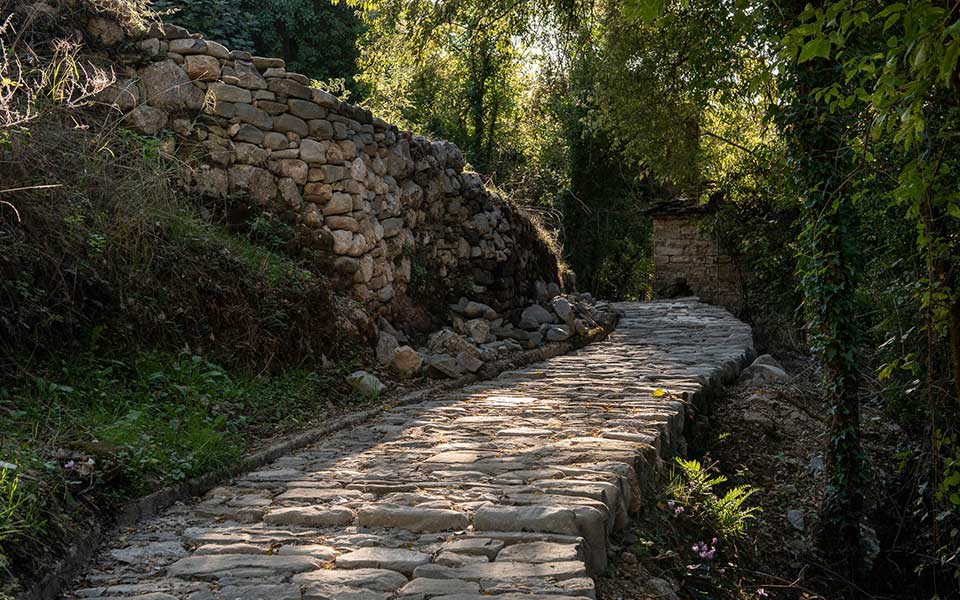
By developing skills for young people, they also hope to stem the brain drain away to the big cities. “Our generation has learned to deal with hardship — nothing comes easy,” Mina explains.
“Looking at the ways things worked in the pre-industrial era doesn’t mean we want to go back to those days. But finding the thread in time that connects past, present and future — a more natural process of evolution — helps people appreciate the value of their heritage and culture. Using these traditional building practices promotes sustainability and local production, but also provides solutions to many of the environmental, economic and social challenges this region faces today. They help put the future back in our hands.”
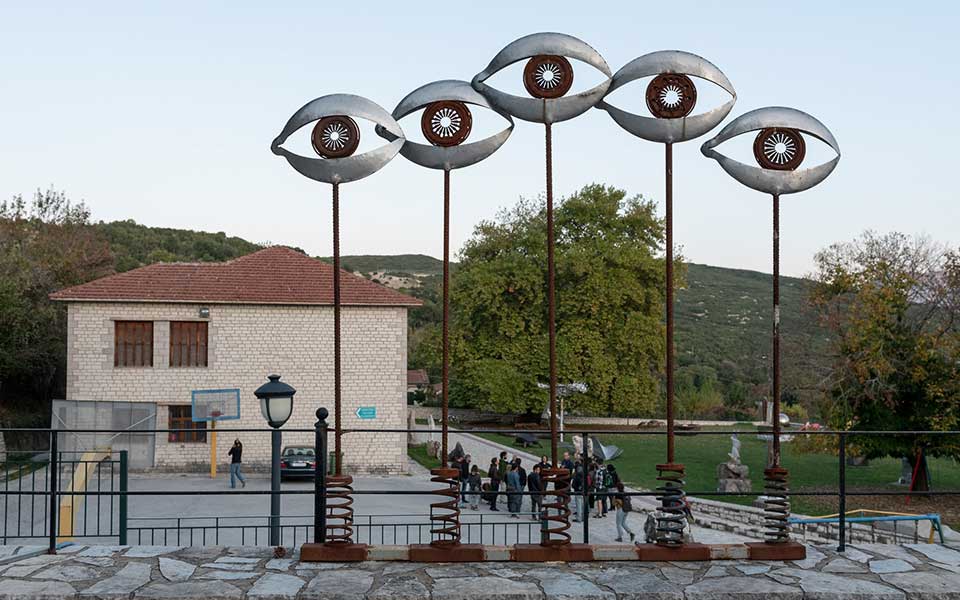
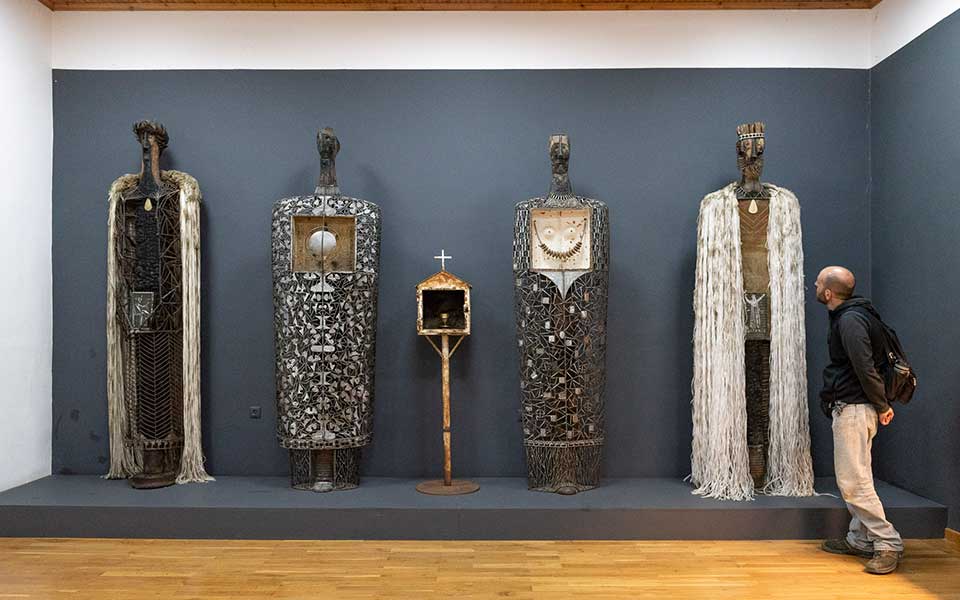
The Avant-Garde…
Sculptor Theodoros Papagiannis, the creator of the Museum of Contemporary Art in nearby Elliniko contributed his stone carving skills to support the project. He created ornamental pieces for the pathway, inspired by the carved stones that have historically featured in many local buildings, as symbols of good luck or prosperity.
Theodoros’ museum, too, is a labor of love. Housed in a once-thriving school building (which used to teach 150 students but now has just a handful) the art and sculpture gallery displays work that draws on the rich artistic and creative traditions of Epirus.
Each year Theodoros invites students and sculptors to the museum to add to its remarkable collection of sculptures, which are displayed along the five kilometer route from Elliniko village to the Monastery of Tsouka. The museum and its sculpture garden are unlikely additions to what most outsiders see as a sleepy and traditional area, showcasing avant-garde contemporary sculpture in a magical setting of forested mountains 20km outside Ioannina.
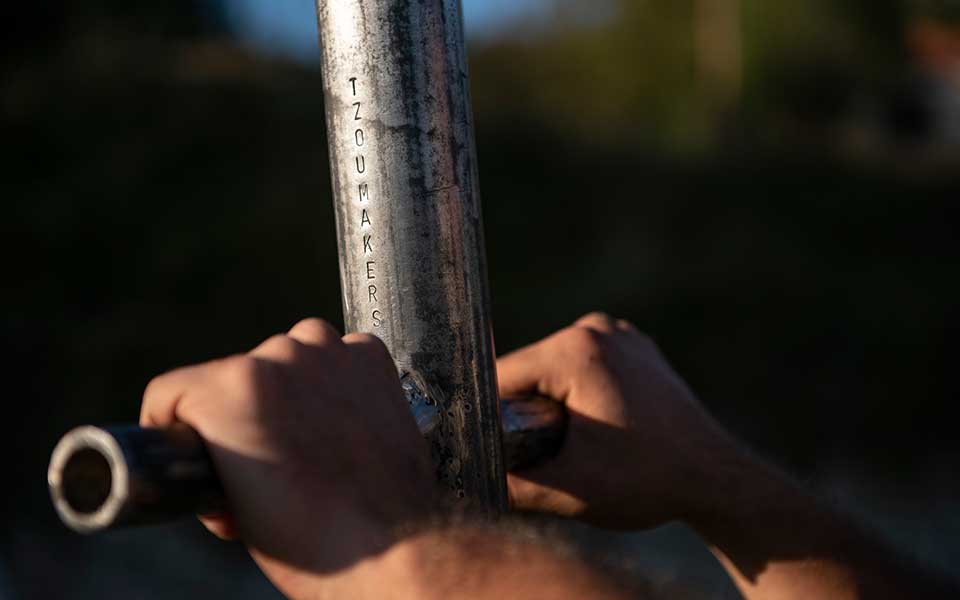
…And the Open Source
Further along the road into the heart of Tzoumerka, you’ll find the stone-walled cultural center of Kalentzi village. On the first floor, there are more unexpected objects: a 3D printer, workbenches, a welding station and an assortment of handmade tools.
This is the nerve centre of Tzoumakers, a research project, open lab and community workshop for local people to design and manufacture their own tools for small-scale agricultural production.
When we visit, there are a crowd of people from nearby villages gathered around watching as Trifonas Papaioannou takes an angle grinder to the group’s latest project: an aromatic plants grinder.
They chose this machine after discussion with local farmers, and when it’s finished, it will have cost around 2,500 euros, whereas those currently on the market cost 8,000-30,000 euros. But as co-founder Alekos Pantazis explains, building the machine themselves is about so much more than saving local farmers money (the tool will be available, free, for any local farmer who wants to use it).
“Small-scale organic farmers need smaller, more bespoke tools because most machinery is made on an industrial scale, for industrial farmers,” Alekos explains. “But we’re coming at this project by adopting the mentality of hackers of the digital commons. We want to change the dynamics of production, to reverse the lack of control farmers have over their technology and end their alienation with the tools they use.
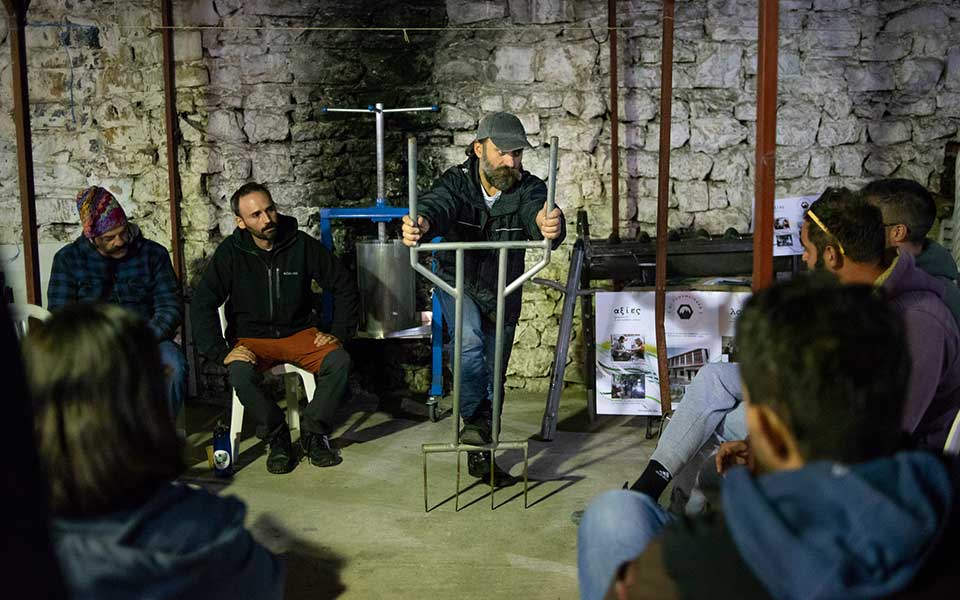
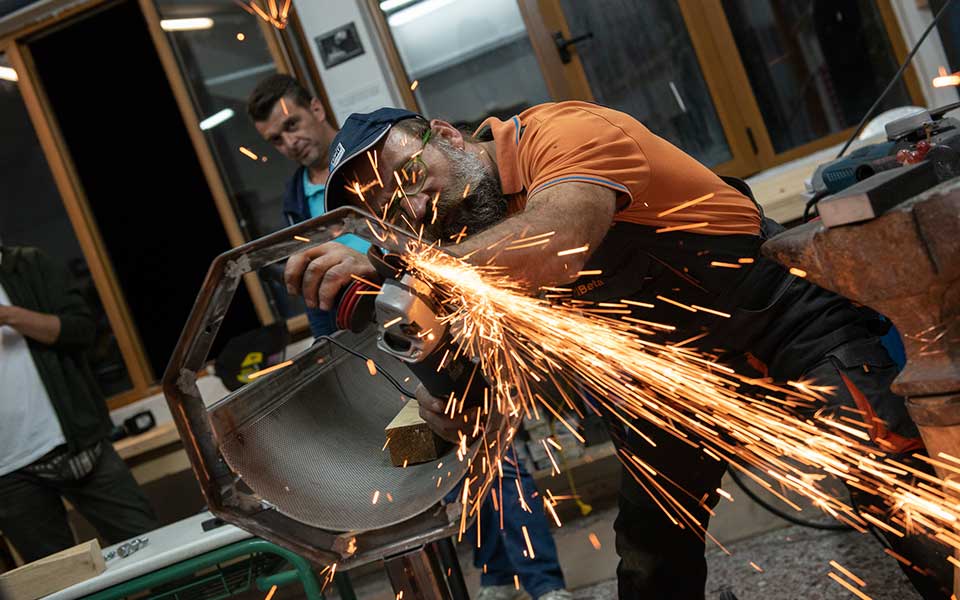
“Creating tools together and sharing that knowledge open-source is about empowering farmers to make their own tools, for the specific needs they have. But it’s also about building and strengthening community and cooperation in rural areas, which can be very isolated.”
Tzoumakers are part of a movement of farmers that includes the more well-known L’Atelier Paysan (France) and FarmHack (USA). Tzoumakers call their approach Cosmolocalism: adopting collaborative processes and techniques shared online by farmers around the world to develop tools needed by farmers in Tzoumerka, then sharing the experience and knowledge they produce with the wider community.
“What is light (knowledge, design) can be shared as a global commons and what is heavy (materials, tools, machinery) can be produced locally with regional biophysical conditions and needs in mind,” Alekos explains.
We join the team as they deliver a talk at Ioannina’s EcoFest, which gives them an opportunity to demonstrate the tools they have created so far, explain their ambitions for the project and listen to ideas and feedback from the farmers and local people who have come to join the discussion.
There are many young faces amongst the producers selling their honey, herbs and other health food products at EcoFest, which serves as a good introduction to the next generation of local farmers.
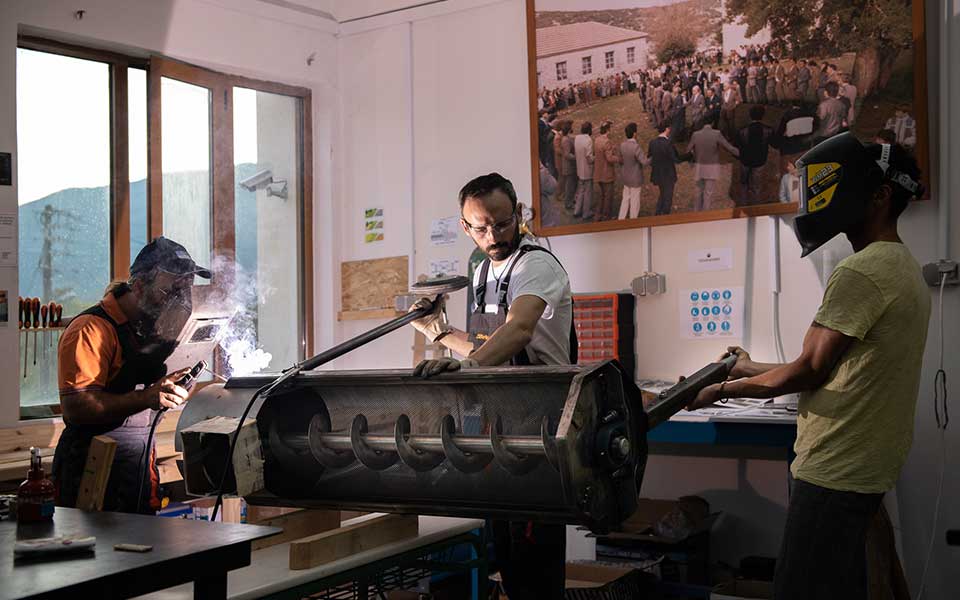
Tzoumakers have presented the project to a number of universities in the region and one of the next projects they are considering is a planting-to-packing collection of tools. While farmers struggle to get investment or government support, Tzoumakers hope their interventions could help reduce the barriers to entering agricultural production, making farming a more accessible and viable option.
“We’re still experimenting with ways to grow this project, involve more local people and make it sustainable,” Alekos explains. “But if we’re successful, we hope to create a powerful network for the sharing of support, knowledge and ideas, making farmers in the area more successful and resilient.”
Together, all three of these projects are expanding the possibilities of what modern life in the Greek countryside can be. Beneath Tzoumerka’s timeless facade, they are just some of many people working hard to build a brighter future for the region.
—
Source of this article: http://www.greece-is.com/

